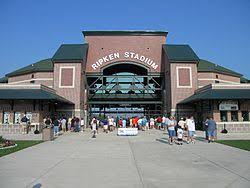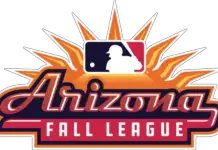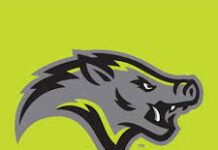“What is your impression on how the minor league system has changed since Elias took over? Different approaches, goals, etc.” – @OriolesMagic32 (Twitter)
There have been a number of excellent long form pieces on this, the majority by Jon Meoli, that I suggest you read. But in short, Orioles player development used to be about taking players and letting talent shine. Trying not to screw guys up and letting the cream rise to the top, so to speak. That has changed. Now, it’s about taking each player and determining what that player needs to be a major league contributor. Then attempting to develop each player to meet that goal. The first step to improving an ability is being able to measure that ability. To that end, this front office has introduced or expanded the use of Trackman, Rapsodo, BlastMotion, KVest, and Edgertronic high speed cameras. I won’t explain each here, but a quick Google search with serve you well. Also, the front office has added development coaches to serve conduits of data to players and other coaches. There are more changes coming. I think we’ll see more younger coaches who have significant experience using data-driven player development (like Tom Eller and Justin Ramsey) hired in the offseason.
“Who is an under the radar guy in the O’s system that no one is talking about but has a real shot at making an impact on the Major League roster in the future?” – TheOtherRipken (OH forum)
Thinking about this question, I had to decide what I considered “under the radar” and what “impact” means. An impact player should be an everyday position player, a member of the rotation, or a bullpen guy who could handle higher leverage situations. An under the radar prospect I defined as someone not in the top 20 prospects in the system (by Baseball America, Fangraphs, or MLBPipeline).
This definition led me to Rylan Bannon. Bannon is a 23 year old 2B/3B who was acquired from the Dogders as a non-headlining piece in the Manny Machado trade. He’s an undersized guy who has a modern swing who makes the most out of his average raw power by putting the ball in the air with frequency. His swing did feature a big leg kick timing mechanism that hurt his ability to stay balanced against quality offspeed stuff. This year he’s cut down on the leg kick and has improved the quality of his contact.
He has put up a batting line 20% above league average between AA and AAA this year. While he’s more likely to be a role player in the majors, there is a real chance he could be an average everyday guy, especially at 2B where he could add value defensively. I’d expect to see a MLB debut sometime in the second half of the 2020 season.
“Bruce Zimmermann had a nice season statistically, but is never mentioned as a real prospect. Is there anything there?” – luismatos4prez
(OH forum)
Yes. Zimmermann has had a nice season, he’s pitched 134 innings of 3.02 ERA ball between AA and AAA. Striking out 8.9/9 and walking 3.3/9 while limiting HRs to .74/9. One of the reasons there wasn’t much buzz on Bruce was due to a below average fastball in past seasons. The pitch was just 88-91mph and lacked any wiggle to stay off the barrel. It got hit hard in AA, even when located well. To his credit, he worked in the offseason to remedy the issue and came out in 2019 throwing 91-94 t95mph. The extra three ticks made a big difference and now the fastball plays when located, although it still doesn’t miss many bats. That’s ok though, because the increased arm speed also improved his fringy slider to an average pitch and he has an above average changeup as well as a show-me curveball for the third time through the order. It looks like he could be back of the rotation candidate in 2020 and beyond.
“Most improved position player prospect in the system in 2019.” – @Prospect Jesus (Twitter)
There has been a lot of focus on improvements made by pitching prospects in 2019. Rightfully so, the list is long and the improvements impressive. Finding the most improved position player is a harder task. Anthony Santander would fit the bill if he was still a prospect. Ryan Mountcastle might seem like the answer, but he’s really just continuing to do what he’s always done, just in AAA now (the batting line looks better because of the inflated AAA offensive environment this year). Rylan Bannon is a candidate with his mechanical changes mentioned above. So is Robert Neustrom, who has battled injuries, but has significantly simplified his swing without sapping his above average raw power. Jaylen Ferguson has gone from a speedy guy who couldn’t hit a lick to a guy who murders fastballs.
But I’ll go with Brett Cumberland. Yes, he’s only had 218 PA, but the switch-hitting catcher is has cut his strikeout rate by over 5%. To my eye, the swing that I characterized as max effort and muscled last year looks more fluid. He’s still putting a ton of balls in the air and producing solid pop, especially for a catcher. Cumberland is never going to be a strong defensive catcher, he looks stiff and uncomfortable behind the plate, but he should be able to stick. He’s thrown out 39% of runners this year, hasn’t committed an error, and has only allowed 1 passed ball. The bar for catcher offense is pretty low and Cumberland can hit a little bit.
“do you think the current brass views Tate and Harvey as long term bullpen pieces or will both or one of them be stretched back out eventually?” – @bguizzet (Twitter)
With Dillon Tate, I think this is going to be his role going forward. The fastball doesn’t play particularly well at lower velocities and the relief role allows him to let it fly. He also has a tendency to leave the slider up which hurts him more the second time through a lineup.
Hunter Harvey is a different case. Plenty of signs point towards relief. His struggles earlier in the year the second time through a lineup, his injury history, his reliever bloodlines, and his proclaimed affinity for the role. Despite all that, there is a solid case to try him as a starter. He went to the bullpen at least partially because of an innings limit. He has a starter’s build, delivery, arsenal, and stuff. The only things he lacks at this point are the command and consistency to start. Considering the amount of development time he’s missed, it’s not surprising that those skills are lagging behind. I think they should try to stretch him out in spring training (assuming a healthy offseason) to assess whether he’s made strides in the consistency of his offspeed stuff and his fastball command.
“After Hall and GrayRod, who is the next most likely (even if unlikely) O’s prospect to become a TOR starter?” – @TjamYork (Twitter)
Top of the rotation starters are pretty rare as are prospects with a chance of becoming TOR guys. Outside of DL Hall and Grayson Rodriguez, the likelihood of any pitcher in the Orioles system being a TOR guy is pretty slim. The one guy who has the stuff and durability to have a chance is Michael Baumann. He’s the most improved pitching prospect in the system in 2019. He’s been sitting 94-96mph, touching as high as 98mph late in starts. The fastball has some ride up in the zone and misses bats. He pairs it with a plus slider that flashes plus-plus at 88-91mph with surprising depth for the velocity. His changeup and curveball have been below average pitches and need to improve to stick as a starter, but have shown signs of improvement recently. In his most recent start he carried the best curveball and changeup I’ve seen from him with both pitches having solid average utility. If that becomes a trend, he looks like a mid-rotation starter with a chance for more if command improves. Still, top of the rotation is a longshot, at his age (23) and with his long arm action, improved command isn’t something I’d project.
“Who are your sleeper prospects at each level?” – @BobWatk76881279 (Twitter)
I defined sleeper by a prospect who isn’t on Fangraphs, Baseball America, or MLBPipeline’s Orioles team list. There are 42 prospects on those three lists, these are some sleepers outside of those players.
(GCL)
Darell Hernaiz – young for the class 2019 draftee, toolsy but raw shortstop with some upside who had a really solid pro debut.
(Aberdeen)
Griffin McLarty – there are a lot of interesting sleeper relief prospects in Aberdeen, but McLarty could profile as a starter. He’s a command and feel RHP who had a velocity spike during his junior season before the Orioles drafted him in June. He’s a guy who could sit 92-94 with a good slider and solid change.
(Delmarva) couldn’t pick just one!!
Toby Welk – DIII player of the year who has a pro body and should stick at 3B. He’s got enough bat speed, a good feel for the barrel, and excellent pitch recognition
Adam Stauffer – 6’7 RHP with a high 3/4 release that helps his 90-94mph fastball and average 12-6 curveball play up big time.
Felix Baustista – Older RH reliever, but huge arm. Touches 101mph with some plane, can flash an above average slider, but lacks command.
Gray Fenter – Older RHP, been working as a starter, future in the pen. Has a really nice fastball/curveball combo, with the fastball up to 96mph in short starts with ride and the curveball plus with 12-6 action. Could move fast in the pen, not sure what the plan is keeping him in Delmarva all year.
(Frederick)
Tim Naughton – RH reliever, 95-98mph with a plus slider, but control/command issues.
(Bowie)
Steven Klimek – Older RH reliever, velocity increase this year, now has an average fastball 93-94mph. Has one of the best curveballs in the system and has developed a useful slider.
(Norfolk)
Zach Muckenhirn – kind of a cop out because he only pitched a couple of AAA innings, but there weren’t any good options here. Muckenhirn has coveted LH velocity, sitting 93-96 in relief. He also has an average slider.

























